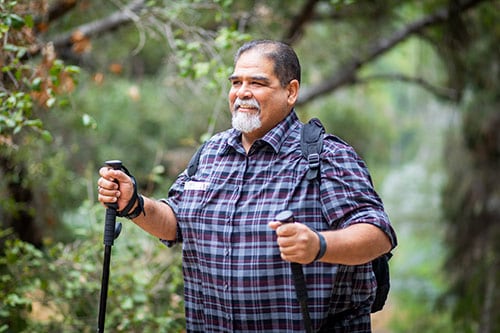What Can Be Done
Obesity is a complex disease with many contributing factors. Neighborhood design, access to healthy, affordable foods and beverages, and access to safe and convenient places for physical activity can all impact obesity. Racial and ethnic disparities in obesity underscore the need to address social determinants of health such as poverty, education, and housing to remove barriers to health. Equitable access to obesity prevention and treatment is also needed to slow the obesity epidemic. Policy makers and community leaders can work to ensure that their communities, environments, and systems support a healthy, active lifestyle for all.

The Federal government is
- Studying what works in communities to make it easier for people to be more physically active and have a healthier diet.
- Measuring trends in obesity and related risk factors.
- Developing and promoting guidelines on dietary patterns and amounts of physical activity Americans need for good health.
- Helping families with lower incomes get affordable, nutritious foods through programs such as the Supplemental Nutrition Program for Women, Infants, and Children (WIC), Pandemic Electronic Benefit Transfer, and farm-to-education programs.
- Supporting children and families who are at higher risk for obesity through services at Federally Qualified Health Centers, Head Start, WIC, and other service agencies.
- Funding programs and providing training and resources for initiatives that support breastfeeding, promote healthy eating, food and nutrition security, and physical activity.

Some states and communities are
- Making it easier to choose healthy food options where people live, work, learn, and play.
- Making healthy foods more available by connecting local producers with retailers and organizations such as childcare, schools, hospitals, and food hubs.
- Promoting nutrition standards in early care and education settings, food pantries, and faith-based organizations.
- Partnering with business and civic leaders to plan and carry-out local, culturally tailored interventions to address poor nutrition, and physical inactivity and tobacco use.
- Designing communities that connect sidewalks, bicycle routes, and public transportation with homes, early care and education settings, schools, parks, and workplaces.
Healthcare providers can
- Measure patients’ weight, height, and body mass index, and counsel them on keeping a healthy weight and its role in disease prevention.
- Screen children and adults for overweight and obesity and refer patients with obesity to intensive programs, including family healthy weight programs and the Diabetes Prevention Program.
- Counsel patients about nutrition, physical activity, and optimal sleep.
- Use respectful and non-stigmatizing, person-first language with all individuals in weight-related discussions.
- Connect patients and families with community services to help them have easier access to healthy food and ways to be active.
- Discuss the use of medications and other treatments for excess weight.
- Seek out continuing medical education on the latest on obesity science.

Everyone can
- Eat a healthy diet by following the 2020-2025 Dietary Guidelines for Americans.
- Get the amount of physical activity recommended by the Physical Activity Guidelines for Americans, 2nd edition.
- Get involved in community efforts to improve options for healthier foods and physical activity.
- Lose weight, if they weigh more than recommended, to help reduce risk for many chronic diseases.
- Get enough sleep.
- Manage stress.
- Talk to their healthcare providers about available obesity prevention and treatment options to help reduce potential health risks.
Error processing SSI file
